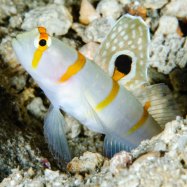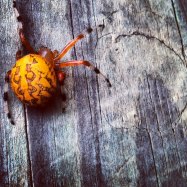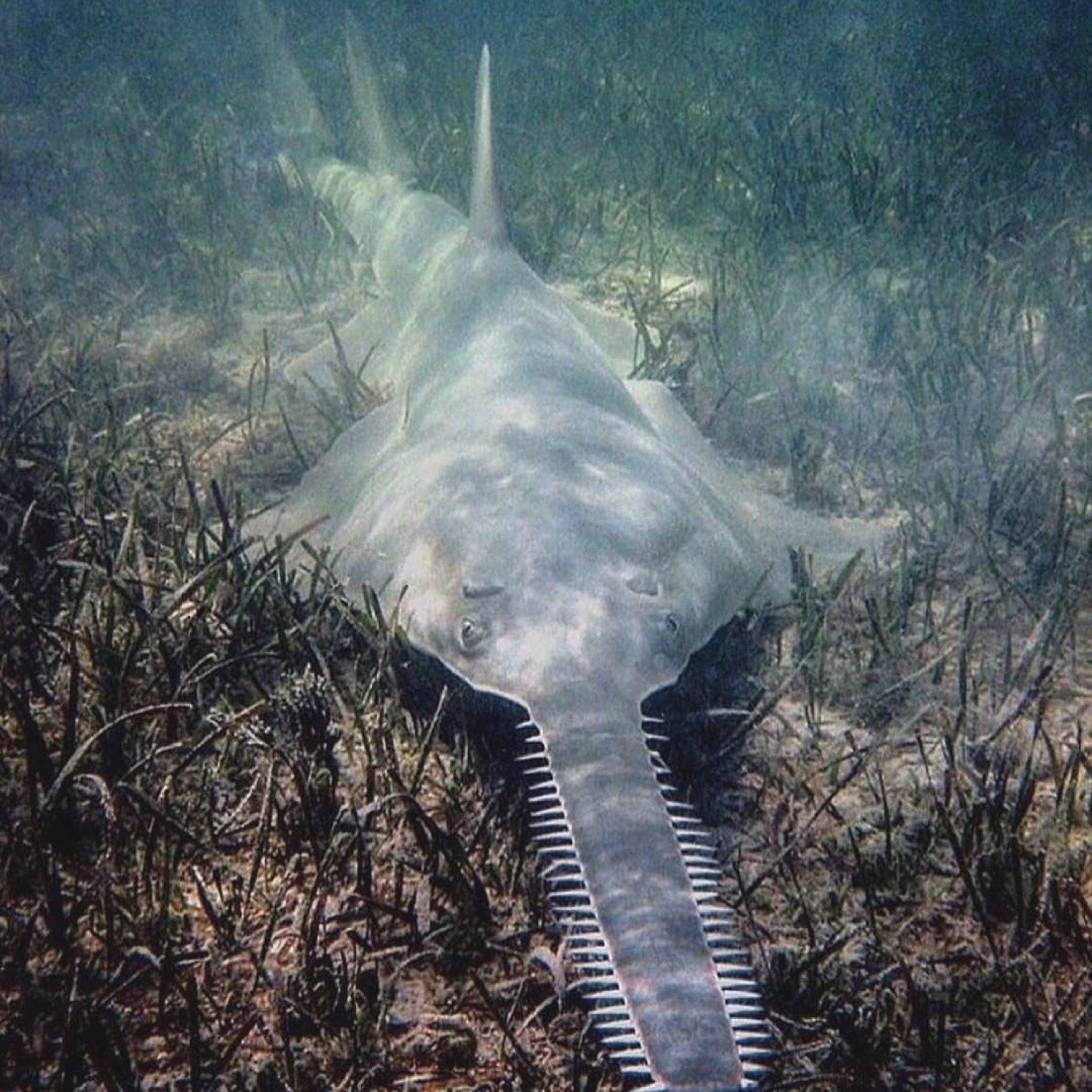
Sawfish
Up to 7 meters
The sawfish, found in coastal regions and estuaries, can grow up to 7 meters long. Belonging to the Pristidae family, its unique body shape includes a long, flattened snout used to hunt for fish and crustaceans. Despite its intimidating appearance, the sawfish is a peaceful animal and plays an important role in maintaining the balance of marine ecosystems. #sawfish #marinelife #oceananimals
Animal Details Summary:
Common Name: Sawfish
Kingdom: Animalia
Habitat: Marine
The Fascinating World of the Sawfish: An Elusive Creature of the Ocean
As we explore the vast depths of the ocean, we come across numerous creatures with unique characteristics that continue to captivate us. One such fascinating creature is the Sawfish. With its unusual appearance and elusive nature, the Sawfish has piqued the interest of marine biologists and animal enthusiasts alike. In this article, we will dive deep into the world of Sawfish and uncover the incredible features that make it an extraordinary animal Sawfish.Scientific Classification
Before we delve into the details of this magnificent animal, let's understand its scientific classification. The Sawfish belongs to the Kingdom Animalia, a diverse group of living organisms with specialized cells and tissues. It falls under the Phylum Chordata, which includes animals with a notochord, a primitive skeletal rod that provides structural support. The Sawfish is classified under the Class Chondrichthyes, which comprises jawed fishes with cartilaginous skeletons. Within this class, it belongs to the Order Pristiformes and the Family Pristidae. Scientifically known as Pristidae, this family name is derived from the Greek word "pristis" meaning "saw," reflecting the unique feature of the Sawfish.Appearance and Physical Characteristics
The Sawfish is an impressive creature with a distinctive appearance. It has an elongated body with a long, flattened snout that resembles a saw. This snout is lined with sharp, serrated teeth that give it the appearance of a saw and the name "Sawfish Sheepadoodle." These teeth are not used for chewing but for defense and stunning their prey. The rest of its body is covered in rough, pliable skin with tiny placoid scales, similar to that of a shark.The coloration of the Sawfish varies from gray to brown on the top and white on the bottom. This color adaptive feature enables it to camouflage with its surroundings, making it difficult for predators to spot. The pigmentation also acts as a visual cue for potential mates during mating season.
The Sawfish is a massive fish with an average length of 4-5 meters, but some can grow up to a staggering 7 meters. It can weigh up to 600 kilograms, making it one of the largest fish in the world. Despite its size, the Sawfish is a graceful swimmer and can move swiftly in the water, thanks to its streamlined body and powerful tail.
Habitat and Distribution
The Sawfish is mainly found in coastal waters of tropical and subtropical regions, making it a marine animal. It prefers shallow coastal regions and estuaries, where it can feed on small fish, crustaceans, and mollusks. The Sawfish can also tolerate brackish water, making it a frequent visitor to tidal rivers and mangrove forests.As the Sawfish is a migratory species, it can be found in multiple countries, including the United States, Australia, Brazil, Venezuela, and many others. Unfortunately, its population has significantly declined in many areas due to overfishing and habitat destruction.
Feeding Methods
The Sawfish is a carnivorous animal with an appetite for small fish and invertebrates. Its saw-like snout is an ingenious adaptation that helps it catch its prey. The Sawfish uses its snout to locate its prey by using electroreceptors, which sense electrical signals emitted by other fish. Once it has located its prey, it uses its saw to stun them, making it easier to capture and devour. The saw is also used for digging in the sand, exposing hidden prey such as mollusks.Despite being a formidable predator, the Sawfish also has natural predators, such as sharks, crocodiles, and humans. Sadly, the demand for its saw (also known as rostrum) in the illegal wildlife trade has led to a drastic decline in its population.
Behavior and Reproduction
The Sawfish is a solitary animal and prefers to spend most of its time alone, except during mating season. They are known to be gentle creatures and pose no threat to humans unless provoked.During the breeding season, male Sawfish show off their agility and strength to attract female Sawfish. The courtship display involves the male tapping its snout against the female's, and eventually, the two will swim together belly to belly, known as the "dancing saws." The female will then lay her eggs in the shallow waters, and the male will fertilize them. The eggs develop into embryos inside the mother's body, and the pups are born as miniature versions of the adults.
Conservation and Preservation
Unfortunately, as with many marine creatures, the Sawfish population has suffered a significant decline due to human activities. The global status of the Sawfish is listed as "critically endangered" by the International Union for Conservation of Nature (IUCN). With its slow reproductive rate and long lifespan, the Sawfish is particularly vulnerable to overfishing and habitat destruction.To protect this incredible species, laws and regulations have been implemented in many countries to restrict trade and fishing of Sawfish. Awareness and educational programs are also being conducted to educate the public on the importance of preserving this animal and its ecosystem.
The Sawfish and Its Importance in the Ecosystem
The Sawfish is an essential part of the marine ecosystem, and its decline has a significant impact. As a top predator, it helps regulate the population of its prey, maintaining a balance in the food chain. Its unique saw-like snout also plays a crucial role in keeping the seabed healthy by stirring up sediment and providing nurseries for small creatures.The decline of the Sawfish population also has economic consequences for coastal communities that rely on fishing and ecotourism. By preserving the Sawfish, we are not only protecting an extraordinary animal but also the livelihoods of many people.
The Future of Sawfish
Despite its decline in numbers, there is still hope for the Sawfish. With efforts focused on protecting its habitat and educating people about its importance, we can see a rise in its population once again.Genetic studies have also shown that the genetic diversity of Sawfish is higher than other elasmobranchs, making it more resilient to environmental changes and increasing the chances of its survival. This gives us hope that with the right conservation efforts, the Sawfish can make a comeback and continue to amaze us with its unique features.
Conclusion
In conclusion, the Sawfish is an incredible creature that continues to fascinate us with its distinctive appearance and behaviors. As we strive to understand and protect the ocean and its inhabitants, the Sawfish stands out as an animal that demands our attention. It reminds us of the importance of preserving our marine ecosystem and the delicate balance of nature. The Sawfish is not just a remarkable animal; it is also a symbol of hope for the future of our ocean.

Sawfish
Animal Details Sawfish - Scientific Name: Pristidae
- Category: Animals S
- Scientific Name: Pristidae
- Common Name: Sawfish
- Kingdom: Animalia
- Phylum: Chordata
- Class: Chondrichthyes
- Order: Pristiformes
- Family: Pristidae
- Habitat: Marine
- Feeding Method: Carnivorous
- Geographical Distribution: Tropical and subtropical coastal waters
- Country of Origin: Multiple countries
- Location: Coastal regions, estuaries
- Animal Coloration: Gray or brown on top, white on bottom
- Body Shape: Elongated body with a long, flattened snout
- Length: Up to 7 meters
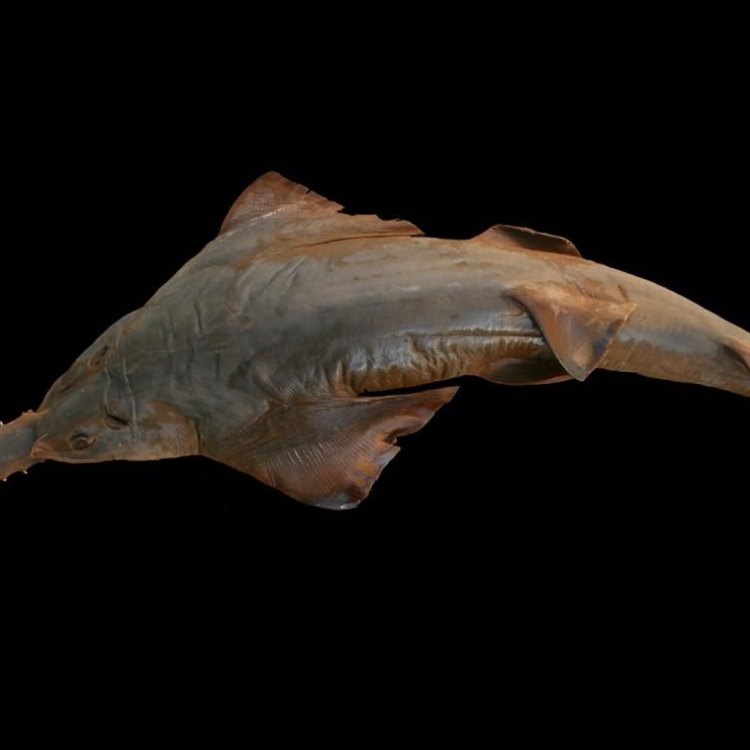
Sawfish
- Adult Size: Around 4-7 meters
- Average Lifespan: Up to 25 years
- Reproduction: Oviparous (egg-laying)
- Reproductive Behavior: Mating occurs during the dry season
- Sound or Call: No vocalizations
- Migration Pattern: Some species migrate long distances
- Social Groups: Solitary or in small groups
- Behavior: Nocturnal, bottom-dwelling
- Threats: Habitat loss, overfishing, accidental capture, pollution
- Conservation Status: Critically Endangered
- Impact on Ecosystem: Top predator, helps maintain balance in marine ecosystems
- Human Use: Traditional medicine, shark fin trade, ornamental fish trade
- Distinctive Features: Long, saw-like snout with teeth
- Interesting Facts: Sawfish are actually a type of ray, not a fish
- Predator: Sharks, larger fish
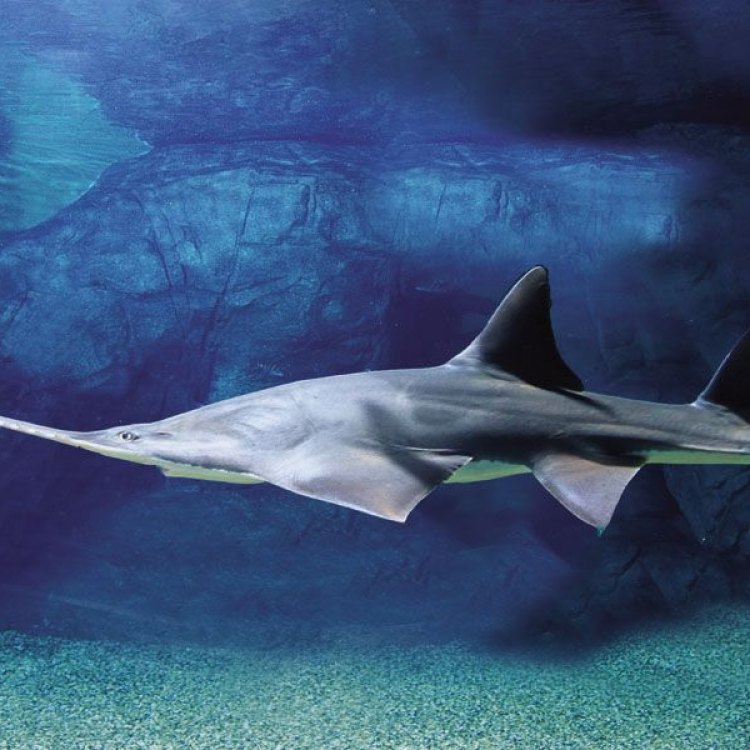
Pristidae
The Unique and Endangered Sawfish: A Sentient "Saw" in the Sea
The ocean is a vast and mysterious place, full of creatures that capture our imagination and curiosity. One of these unique creatures is the sawfish, a large and powerful predator with a distinctive feature that gives it its name - a long, saw-like snout with teeth.Sawfish, also known as carpenter sharks, are not actually a type of fish but a type of ray. They are part of the elasmobranch family, which also includes sharks and skates PeaceOfAnimals.Com. Sawfish are a rare and endangered species, with a dwindling population due to various threats. In this article, we will dive deep into the world of the sawfish, exploring their physical characteristics, behavior, and the impact they have on the marine ecosystem.
Adult Size and Average Lifespan
Sawfish can grow to be quite large, with some individuals reaching up to 4-7 meters in length. That's longer than a standard school bus! They can weigh up to 1,200 pounds, making them one of the largest predatory fish in the world. However, sawfish are slow-growing creatures, and it can take them up to a decade to reach their full adult size.
Despite their size, sawfish have a relatively short lifespan, usually living for about 25 years. This is due to various factors, including habitat destruction and overfishing, which we will explore in more detail later in the article.
Reproductive Behavior and Mating Patterns
Like many other elasmobranchs, sawfish are oviparous, meaning they reproduce by laying eggs. However, the exact reproductive behavior of sawfish is still relatively unknown Stoplight Loosejaw. It is believed that they mate during the dry season, but researchers have yet to observe this behavior in the wild.
One of the reasons for this lack of understanding is the elusive nature of sawfish. They are solitary creatures that prefer to stay hidden, making it challenging to study their behavior in their natural habitat. As a result, there is still much to discover about the reproductive habits of these fascinating creatures.
Sound or Call - A Silent Predator
While many marine animals use vocalizations to communicate, sawfish are silent predators. They have no vocal cords and do not produce any sounds or calls. Instead, they rely on their acute senses, including their electroreceptors, to locate prey hidden in the muddy and dark ocean floor.
Migration Patterns and Social Groups
Some species of sawfish are known to migrate long distances, but the exact patterns and reasons for this migration are still unclear. Researchers believe that these migrations may be influenced by the changing water temperatures or food availability. However, more research needs to be done to better understand the migration patterns of this elusive species.
As solitary creatures, sawfish are not known to form social groups. They are usually found alone or in small groups of two or three individuals, often consisting of a female and her offspring. These small groups can consist of sawfish of different sizes and ages, suggesting that they may not be related genetically.
Behavior and Nocturnal Habits
Sawfish are predominantly nocturnal creatures, meaning they are most active at night. This is due to their preferred habitat, which is usually dark and murky. Their dark skin and flat body shape also allow them to blend in and remain hidden as they hunt for prey.
These bottom-dwelling predators use their saw-like snouts to stir up the muddy seafloor, searching for food. Once they locate their prey, they use their sharp teeth to catch and devour it. Sawfish primarily feed on fish, crustaceans, and other marine creatures found in the muddy ocean floor.
Threats to Sawfish and Their Conservation Status
Sawfish are listed as Critically Endangered on the IUCN Red List of Threatened Species, with significantly declining populations in the wild. One of the main threats to sawfish is habitat loss, primarily due to human activities. Coastal development, dredging, and pollution have all contributed to the loss and degradation of their habitat.
Furthermore, sawfish are also facing overfishing and accidental capture, especially in areas where they are seen as bycatch in commercial fishing activities. Their distinctive snout is often mistaken for that of a shark, leading to their mistaken capture and death.
Another significant threat to sawfish is the use of their body parts in traditional medicine. In some cultures, the saw-like rostrum of sawfish is believed to possess healing properties. This has led to an increase in the demand for sawfish in the traditional medicine market, further contributing to their decline.
Impact on the Ecosystem and Human Use
Despite their dwindling population, sawfish play a crucial role in the marine ecosystem as top predators. They help maintain balance and control the populations of other marine creatures, playing a vital role in maintaining a healthy ecosystem.
However, human activities such as overfishing and habitat destruction have disrupted the sawfish population, creating a ripple effect within the ecosystem. This has led to imbalances, such as an increase in the population of some species of fish and a decrease in others.
Unfortunately, humans have also been the cause of the decline of sawfish. Apart from the threats mentioned above, sawfish have also been targeted for their fins in the shark fin trade and their unique appearance for the ornamental fish trade. These practices have further contributed to their decline and must be addressed to protect this crucial species.
Distinctive Features and Interesting Facts
Perhaps the most distinctive feature of sawfish is their saw-like snout, known as a rostrum. The rostrum is lined with sharp teeth, which they use to dig through the ocean floor and catch prey. The rostrum is also filled with sensory pores, allowing sawfish to detect electrical signals given off by their prey.
Interestingly, despite their name, sawfish are not aggressive creatures. They will only use their snout for self-defense when threatened. These gentle giants tend to avoid human interaction and prefer to remain hidden in their natural habitat.
Another interesting fact about sawfish is that their rostrum continues to grow as they age. As a result, older sawfish have longer and more impressive snouts, making them easily identifiable.
Predators and Conservation Efforts
Despite their size and power, sawfish do have natural predators, including larger sharks and other fish. However, their biggest threat remains human activities, and it is up to us to protect and conserve this dwindling species.
Conservation efforts for sawfish are currently underway, with organizations and governments working together to protect and rebuild their populations. These efforts include the implementation of strict fishing regulations, protecting their habitats, and education and awareness programs to reduce the demand for their body parts.
In recent years, there have been some success stories, such as the reintroduction of sawfish into areas where they were previously extinct. These efforts give hope that with continued conservation and protection, sawfish populations can recover and thrive once again.
In conclusion, the sawfish is a unique and endangered species that plays a crucial role in the marine ecosystem. Their distinctive features, elusive nature, and powerful presence make them a fascinating creature to study and protect. However, their decline is a stark reminder of the impact of human activities on the natural world and the urgent need for conservation efforts to protect these magnificent creatures and preserve their vital role in the ecosystem.
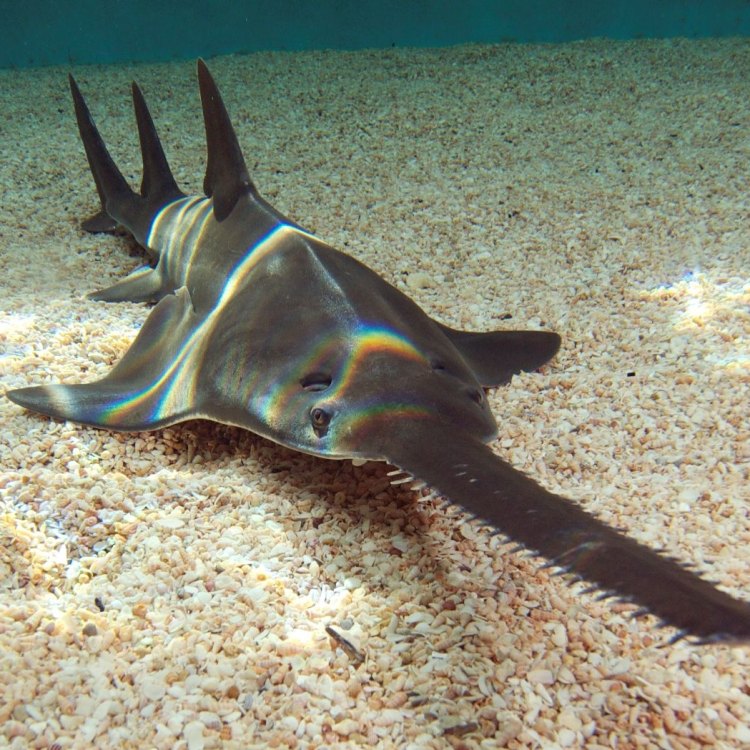
The Fascinating World of the Sawfish: An Elusive Creature of the Ocean
Disclaimer: The content provided is for informational purposes only. We cannot guarantee the accuracy of the information on this page 100%. All information provided here may change without prior notice.










